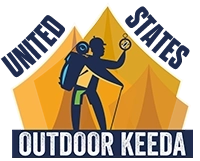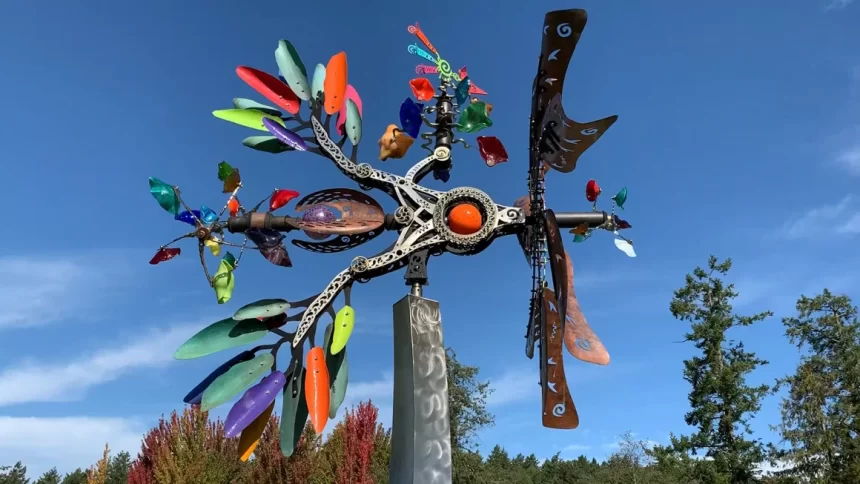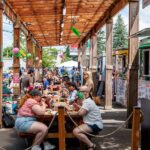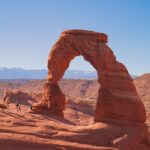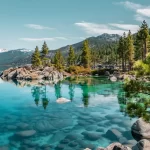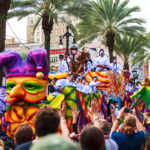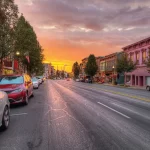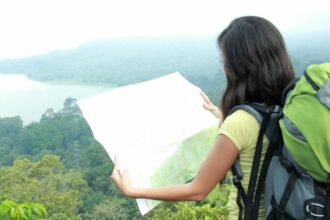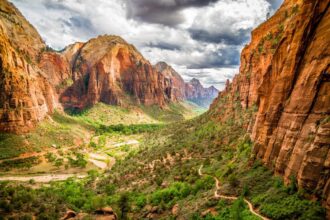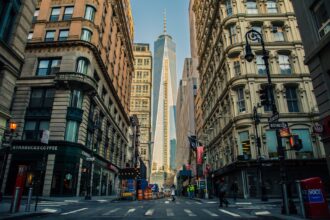Imagine stumbling across a hillside painted with Bible verses in the middle of a desert, or a row of half-buried Cadillacs begging for your spray paint. The USA is dotted with outdoor art installations that feel like portals to another world—quirky, bold, and unapologetically weird. These aren’t your stuffy museum galleries; they’re raw, open-air expressions of human creativity, perfect for travelers who crave the unexpected. Whether you’re a couple snapping selfies, a solo adventurer chasing inspiration, or friends hunting for the ultimate road-trip stop, these destinations will spark joy and make you see the world a little differently. Here’s my love letter to America’s most eccentric outdoor art adventures, written like we’re swapping stories over a campfire.
1. Salvation Mountain, Niland, California: A Desert Dreamscape
Deep in the California desert, Salvation Mountain rises like a fever dream—a sprawling hillside slathered in vibrant paint, adorned with Bible verses, flowers, and hearts. Built by Leonard Knight over decades using adobe, straw, and donated paint, this folk-art masterpiece screams love and devotion. I wandered its paths, my sneakers crunching on the sun-baked ground, feeling like I’d stepped into an artist’s soul. Waterfalls (sadly dry) and a giant “God Is Love” sign beckon you to climb, snap photos, or just sit in awe. It’s raw, imperfect, and deeply human.
Why It’s a Must-See: Salvation Mountain is a testament to one man’s passion, blending spirituality and creativity in a way that feels both intimate and universal. The desert solitude amplifies its magic.
Must-Do: Bring a journal to jot down thoughts—the place inspires reflection. Don’t miss the nearby “museum” of painted cars and hay bales for extra quirk.
Pro Tip: Visit at sunrise for cooler temps and golden light that makes the colors pop. Bring water; the desert heat is no joke. Pair it with a stop at nearby Slab City, an off-grid art community.
2. Cadillac Ranch, Amarillo, Texas: Paint Your Own Masterpiece
Picture this: ten vintage Cadillacs, nose-down in a dusty Texas field, their tailfins jutting skyward like a surreal Stonehenge. Cadillac Ranch, created in 1974 by art collective Ant Farm, is a living canvas where visitors are handed the brush—or rather, the spray can. I grabbed a can of neon pink and added my initials to the ever-evolving layers of paint, laughing as a gust of wind speckled my jeans. It’s chaotic, colorful, and gloriously interactive, with strangers bonding over their makeshift murals.
Why It’s a Must-See: This is art you don’t just see—you create. It’s a bucket-list stop on Route 66, embodying the free-spirited vibe of the American road trip.
Must-Do: Bring your own spray paint (available at nearby gas stations) to leave your mark. Take a time-lapse video of your group painting—it’s a fun keepsake.
Pro Tip: Wear old clothes; paint gets everywhere. Visit early to avoid crowds, and check X for recent photos to see how the cars’ colors have evolved.
3. The Fremont Troll, Seattle, Washington: A Monster Under the Bridge
Lurking beneath Seattle’s Aurora Bridge, the Fremont Troll is a concrete behemoth clutching a real Volkswagen Beetle in its gnarled hand. This 18-foot-tall sculpture, crafted in 1990 to revitalize the Fremont neighborhood, feels like it crawled out of a fairy tale. I stood in its shadow, half-expecting it to blink, while kids climbed its back and couples posed for goofy photos. The surrounding Fremont area, with its quirky coffee shops and murals, adds to the artsy vibe.
Why It’s a Must-See: The troll’s sheer scale and playful menace make it unforgettable. It’s a symbol of Seattle’s eccentric spirit, blending urban grit with whimsy.
Must-Do: Snap a photo “escaping” the troll’s grasp. Afterward, grab a latte at Fremont Coffee Company and explore nearby public art, like the Lenin statue.
Pro Tip: Visit on a weekday morning for fewer people. Parking is tricky—use street parking on N 36th St. and walk down. If you’re lucky, you might catch a local art walk nearby.
4. Carhenge, Alliance, Nebraska: A Prehistoric Auto Tribute
In the middle of Nebraska’s plains, Carhenge mimics England’s Stonehenge, but instead of stones, it’s 38 vintage cars stacked and painted gray to form a circle. Built in 1987 by Jim Reinders as a tribute to his father, it’s equal parts absurd and awe-inspiring. I walked the loop, chuckling at the creativity, while the wind whistled through the open fields. Nearby, a “Car Art Reserve” features sculptures like a metal dinosaur made from auto parts.
Why It’s a Must-See: Carhenge is a quirky nod to history and ingenuity, perfect for road-trippers craving something bizarre. It’s a testament to small-town America’s big imagination.
Must-Do: Visit at sunset for dramatic silhouettes against the prairie sky. Bring a picnic to enjoy on the grassy grounds—it’s a chill spot to linger.
Pro Tip: It’s free, but donations keep it maintained. Combine with a detour to nearby Scotts Bluff National Monument for a mix of art and nature. Check the Carhenge website for summer solstice events.
5. The Heidelberg Project, Detroit, Michigan: Art from Resilience
In Detroit’s McDougall-Hunt neighborhood, the Heidelberg Project transforms vacant lots into an open-air gallery of found-object art. Artist Tyree Guyton started it in 1986, using painted tires, shoes, and clocks to reclaim a struggling community. I wandered past polka-dot houses and a yard of vacuum cleaners, each piece telling a story of hope amid decay. It’s raw, emotional, and ever-changing, with installations that evolve as the neighborhood does.
Why It’s a Must-See: This isn’t just art—it’s a social statement, blending beauty with activism. It’s a powerful stop for travelers who want meaning behind the visuals.
Must-Do: Chat with volunteers or locals (if they’re around) to hear the project’s history. Take photos, but respect the residential area—don’t trespass on private yards.
Pro Tip: Check the project’s website for visiting hours, as some areas may be closed for maintenance. Pair with a visit to Detroit’s Motown Museum for a deeper cultural dive.
Practical Tips for Art-Chasing Travelers
-
Plan for Spontaneity: These sites thrive on interaction—bring spray paint for Cadillac Ranch or a sketchbook for Salvation Mountain to join the creative vibe.
-
Check Conditions: Desert spots like Salvation Mountain get brutally hot; northern ones like Carhenge can be windy. Pack layers and sunscreen.
-
Support the Art: Many installations (Heidelberg, Salvation Mountain) rely on donations. Toss a few bucks in if you can—it keeps the whimsy alive.
-
Capture the Moment: These are Instagram gold, but don’t just snap and run. Pause to feel the art’s story, whether it’s the troll’s menace or Carhenge’s absurdity.
-
Combine with Local Flavor: Pair each stop with nearby gems—craft coffee in Seattle, a diner burger in Amarillo, or Detroit’s soul food—to round out the day.
These art installations aren’t just places to visit—they’re experiences that stick with you, like a song you can’t stop humming. From painting cars in Texas to climbing a painted hill in California, they invite you to play, reflect, and see the world through a weirder, brighter lens. So grab your camera, hit the road, and chase the whimsy. Where will you start?
